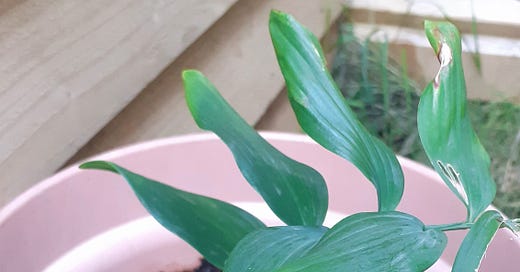Pre the cataclysmic events that unfolded in 2019, I had been happy to purchase my tinctures and dried herbs from a reputable herbal wholesale supplier. Not having a garden of my own, and running a busy clinic, meant that apart from making sausage tree cream, I had neither the time nor the inclination to go out gathering and processing plants for myself.
All this changed in the very first week of the pandemic. Overnight, indispensable medicines like echinacea became virtually impossible to get hold of. The price of goldenseal rocketed through the roof, and even common staples like elderberries were suddenly under the spotlight, inciting the public (and some herbalists,) to panic buy stock, leading to what I now refer to as “the great elderberry drought.”
Never in all my born days had I imagined that herbs (of all things!) would become a scarce commodity. When it came to my precious dispensary, I realised that I needed to become way more self sufficient.
Now anyone who has optimistically started out on this road will know it isn’t a project you can manifest overnight. Growing and foraging for your own medicines is dependant on many factors, a lot of which are beyond your control.
For example:
The window for gathering plants when they’re at their best is pretty short. If you happen to be ill, have a family emergency, or some other disaster befalls you, then that’s you done until next year.
Next, you have to find a good spot. This means avoiding pollution and places that haven’t already been decimated by unethical foragers who pillage the entire hoard leaving nothing behind for man nor beast. During lockdown, I discovered this was a particularly annoying problem.
Not all plants can be foraged. Nature isn’t a supermarket with the shelves fully stocked waiting for you to come and fill your boots. Some plants have to be grown. This means sourcing seeds, cuttings, or roots, and then waiting. Patiently.
Even then, not all the plants you decide to nurture by hand will be established and ready to harvest within a season, or even a year. There are other issues - the weather will not always be kind, and garden pests also need to eat. A myriad of factors can (and will,) ruin your endeavours.
You get the idea.
I was going to have to decide on a core set of plants I knew well and grew locally. I decided that the rest (for now,) would have to be sourced from my herbalist community, who are generally very supportive and happy to sell, share, or trade with their fellow comrades in the field.
This is how I came across Solomon’s seal (Polygonatum multiflorum.)
Keep reading with a 7-day free trial
Subscribe to The Herbalist's Diary to keep reading this post and get 7 days of free access to the full post archives.




